As per below method how to find Trapezoidal footing volume (Isolated Footing Formula)
In this method drive formula of trapezoidal footing as per drawing specification
Trapezoidal Footing Formula (Trapezoidal Footing Volume Formula)
Important Point
As shown in Fig of trapezoidal footing. In this footing, two different parts show in fig.
-
-
- Rectangle/ Square Cubic Area
- Truncated Pyramid Area
-
Trapezoidal Footing =
Rectangle/ Squared Cubic Area (V1)
Truncated Pyramid Area (V2)
The volume of trapezoidal footing (Footing Calculation)
= Rectangle/ Square cubic area (V1) + Truncated Pyramid Area (V2)
V = V1 +V2
V = Volume of Trapzodial Footing.(Area of Trapezoidal Footing / Trapezoidal VolumeFormula)
V1 = Rectangle/ Square Cubic Area (V1)
Rectangle Cubic Area
- V1 = L x B x H
- L = Length of the cuboid = m. / mm.
- B = Breadth of the cuboid = m. / mm.
- H = Hight of the cuboid = m. / mm.
V2 = Truncated Pyramid Area (V2)
Truncated Pyramid Area (V2)
- V2 = (h/3) (A1 + A2 +√(A1 . A2))
- A1 = L1 x B1 = Sq.m /Sq. mm
- A1 = Truncated Pyramid Bottom Area
- A1 = L2 x B2 = Sq.m /Sq. mm
- A2 = Truncated Pyramid Top Area
- h = Height of Truncated Pyramid = M. / MM.
Derive Trapezoidal Pyramid Formula.(Trapezoidal Formula)
- V2 = (h/3) (A1 + A2 +√(A1 + A2))
One Cubicl = Six part of Truncated Pyramid
- V2 =Truncated Pyramid Area
- Cubic = 1/6 Truncated Pyramid area
- A3 =1/6 Truncated Pyramid Area
Truncated PyramidArea
= 1/6 A3
= 1/6 (a-b) 3
= 1/6 (a-b) (a2 + b2 +ab )
a-b = 2h
a2 = a x a = A1
b2 = b x b = A2
= 1/6 . 2h. (a2 + b2 +ab )
=1/3. h. (a2 + b2 +ab )
=1/3 . h. (a + b + √(a.b))
=1/3. h. (A1 + A2 +√(A1.A2))
Example : Calculation Using Trapezoidal Footing Formula
The trapezoidal footing formula could be explained with an example. Consider a trapezoidal footing arrangement as shown in as per below fig.
Elevation of Trapezoidal Footing
Plan of Trapezoidal Footing
Here, a square trapezoidal footing is taken into consideration
Volume of Trapezoidal Footing (V) = V1 +V2
V1 = Squared Cubic Area
V2 =Truncated Pyramid Area
Let’s Find V2 ,
Top Square area = A2 = L2 x B2
= 0.720m x 0.70 m
=0.49 sq.mm
Bottom Square area = A1 = L1 x B1
= 1.6 m x 1.6 m
=2.56 sq.mm
V2 = (h/3) (A1 + A2 +√(A1 . A2))
= (0.5 / 3) x ( 0.49 + 2.56 + square root of ( 0.49 x 2.56))
= (0.1667) x (0.49 + 2.56 + 1.12)
= (0.1667) x ( 4.17 )
= 0.695 Cubic meter.
V2 = 0.695 m3.
Let’s Find V1,
Square Cubic Area
V1 = L1 x B1 x H
= 1.5m x 1.5 m x 0.3 m
= 0.675 m3.
Volume of Trapezoidal Footing V = V1 + V2 = 0.675 + 0.695 = 1.37 m3
The formula can be used to get trapezoidal footing that’s either square or rectangle in dimension.
Footing Calculation Example
- Volume = H/3 (A1+A2+(√A1 x A2)
- A1 = 2 x 1.5 = 3 Sqm.
- A2 = 0.5 x 0.3 = 0.15 Sqm.
- H = 0.15m.
- Now Volume = 0.15/3 x (3+0.15+(√3 x 0.15)
- Now Volume = 0.05 x (3.15+0.67)
- Volume = 0.19 m3
- Volume (V) = 0.19 m3
Formula of Trapezoidal
The area of a trapezoid is found using the formula, A = ½ (a + b) h, where ‘a’ and ‘b’ are the bases (parallel sides) and ‘h’ is the height (the perpendicular distance between the bases) of the trapezoid.
What Is Isolated Footing?
An isolated footing is one of the most used types of foundation to support single-columns when they are arranged at a long distance. An isolated footing must be designed to avoid exceeding its bearing capacity and provide safety against overturning or sliding while preventing the ground from settling.
Also, Read: Load Calculation on Column
What Is Trapezoidal Footing?
The trapezoidal footing, which may be used to carry two columns of unequal loads when distance outside the column of the heaviest load is limited. In such case using a rectangular footing may lead to the resultant of loads dos not fall at the middle length of the footing.
Where Are Used Trapezoidal Footing?
A trapezoidal footing, which may be used to carry two columns of unequal loads when distance outside the column of the heaviest load is limited. trapezoidal footings are used in cases where the loads are unequal. Trapezoidal footings are mostly used for residential houses and buildings.
Trapezoidal Area Formula
The area of a trapezoid is found using the formula, A = ½ (a + b) h, where ‘a’ and ‘b’ are the bases (parallel sides) and ‘h’ is the height (the perpendicular distance between the bases) of the trapezoid.
Trapezoid Volume Formula
Formula for Volume of a Trapezoidal Prism. If the prism length is L,trapezoid base width B, trapezoid top width A, and trapezoid height H, then the volume of the prism is given by the four-variable formula: V(L, B, A, H) = LH(A + B)/2. In other words, multiply together the length, height, and average of A and B.
Trapezoid Formula Volume
Formula for Volume of a Trapezoidal Prism. If the prism length is L,trapezoid base width B, trapezoid top width A, and trapezoid height H, then the volume of the prism is given by the four-variable formula: V(L, B, A, H) = LH(A + B)/2. In other words, multiply together the length, height, and average of A and B.
Trapezoidal Footing Design
Trapezoidal Footing Volume
How Do You Make a Trapezoidal Footing?
Trapezoidal footing is formed by combining cuboid & truncated pyramid. Cuboid may be rectangular or square in shape. A special case of footings is the trapezoidal footing that may be utilized to bear two columns of unbalanced loads when distance outside the column of the massive load is restricted.
Trapezoid Volume Equation
Formula for Volume of a Trapezoidal Prism. If the prism length is L,trapezoid base width B, trapezoid top width A, and trapezoid height H, then the volume of the prism is given by the four-variable formula: V(L, B, A, H) = LH(A + B)/2. In other words, multiply together the length, height, and average of A and B.
Trapezoidal Formula for Area
The area of a trapezoid is found using the formula, A = ½ (a + b) h, where ‘a’ and ‘b’ are the bases (parallel sides) and ‘h’ is the height (the perpendicular distance between the bases) of the trapezoid.
What Is Prismoidal Formula?
A formula used in the calculation of earthwork quantities. It states that the volume of any prismoid is equal to one-sixth its length multiplied by the sum of the two end-areas plus four times the mid-area.
Volume of Trapezoid Formula
Formula for Volume of a Trapezoidal Prism. If the prism length is L,trapezoid base width B, trapezoid top width A, and trapezoid height H, then the volume of the prism is given by the four-variable formula: V(L, B, A, H) = LH(A + B)/2. In other words, multiply together the length, height, and average of A and B.
What Is a Trapezoidal Footing?
The trapezoidal footing, which may be used to carry two columns of unequal loads when distance outside the column of the heaviest load is limited. In such case using a rectangular footing may lead to the resultant of loads dos not fall at the middle length of the footing.
Trapezoid Volume Calculation
Formula for Volume of a Trapezoidal Prism. If the prism length is L,trapezoid base width B, trapezoid top width A, and trapezoid height H, then the volume of the prism is given by the four-variable formula: V(L, B, A, H) = LH(A + B)/2. In other words, multiply together the length, height, and average of A and B.
Volume of Trapezoidal Footing
- V = H/3 (A1+A2+(√A1 x A2)
- A1 = Area of Lower Portion.
- A2 = Area of Upper Portion.
- H = Height of trapezoidal portion.
How Do You Find Volume in Footing?
Calculating the top surface area and multiplying it with the depth or height of the column.
- Volume of Concrete = 0.6×0.4×3= 0.72 m3
- Volume of Circular column = πr2 x 3 = 3.14 x 0.252 x3 = 0.58 m3
- Volume of concrete = 1.2 x 1.0 x 0.1 = 0.12m3 Total volume of concrete required for footing= 0.32+0.12 = 0.44 m3
How Do You Calculate Footing Volume?
Measure the length and width that you’d like to cover. Multiply the length by the width to determine square footage. Convert the thickness from inches to feet. Multiply the thickness in feet by the square footage to determine cubic feet.
What Is the Formula for Volume of a Trapezoid?
If the prism length is L,trapezoid base width B, trapezoid top width A, and trapezoid height H, then the volume of the prism is given by the four-variable formula: V(L, B, A, H) = LH(A + B)/2. In other words, multiply together the length, height, and average of A and B.
How Do You Calculate Trapezoidal Footing Steel?
N = [(Length of Footing – 2 x cover)/spacing of steel bar + 1
- A = 1200 mm length in X-direction
- B = 1200 mm length in Y-direction
- C = 50 mm cover of footing
- a = 150 mm spacing in X-direction bar
- b = 200 mm spacing in Y-direction bar
- d = 450 mm depth of footing
- D = Length of 90′ bend
- d1 = 12 mm diameter in X-direction
- d2 = 10 mm diameter in Y-direction
How Do You Calculate the Volume of a Trapezoid?
If the prism length is L,trapezoid base width B, trapezoid top width A, and trapezoid height H, then the volume of the prism is given by the four-variable formula: V(L, B, A, H) = LH(A + B)/2. In other words, multiply together the length, height, and average of A and B.
How to Find the Volume of a Trapezoidal Pyramid?
To find the surface area, the amount of space on the outside of a solid, of a trapezoidal prism, you’ll need to find the area of the trapezoid base and multiply it by two. You’ll then add the area of the four rectangles to the area of the two bases.
How Do You Find the Volume of a Trapezoidal Footing?
- V = H/3 (A1+A2+(√A1 x A2)
- A1 = Area of Lower Portion.
- A2 = Area of Upper Portion.
- H = Height of trapezoidal portion.
How Do You Find the Volume of a Trapezoidal Pyramid?
If the prism length is L,trapezoid base width B, trapezoid top width A, and trapezoid height H, then the volume of the prism is given by the four-variable formula: V(L, B, A, H) = LH(A + B)/2. In other words, multiply together the length, height, and average of A and B.
Under What Circumstance Trapezoidal Footing Is Provided?
Trapezoidal footing is provided when one column load is much more than the other. As a result, the both projections of footing beyond the faces of the columns will be restricted. Rectangular footing is provided when one of the projections of the footing is restricted or the width of the footing is restricted.
Like this post? Share it with your friends!
Suggested Read –
- What Is EDM in Surveying | Type | Errors
- Top 10 Best Cement Companies In India 2021
- What Is SBC of Soil? | Safe Bearing Capacity of Soil
- What is BoQ | BoQ Meaning |Advantages of BoQ | What is BoM
- How to Calculate Rebar Quantity
- Trapezoidal Footing Calculator | Trapezoidal Formula | Volume of Trapezoidal Footing
- What Is a Bar Bending Schedule | Preparation as Per Bs 4466 | Tolerances as Per Bs 4466
Originally posted 2023-05-08 03:03:20.
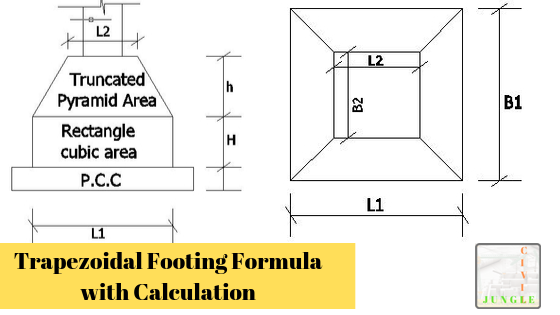
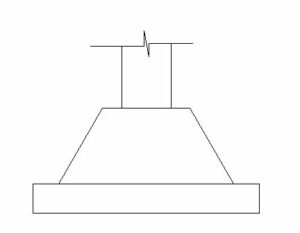

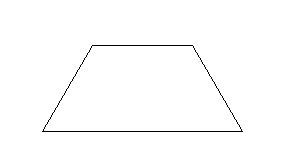
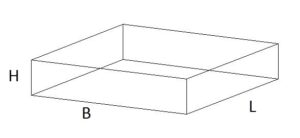
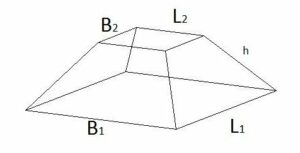
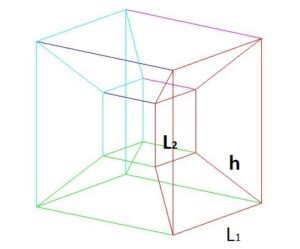
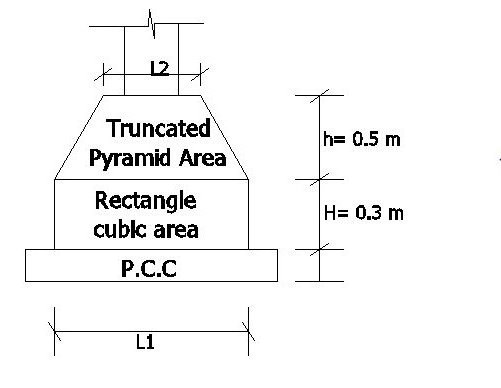

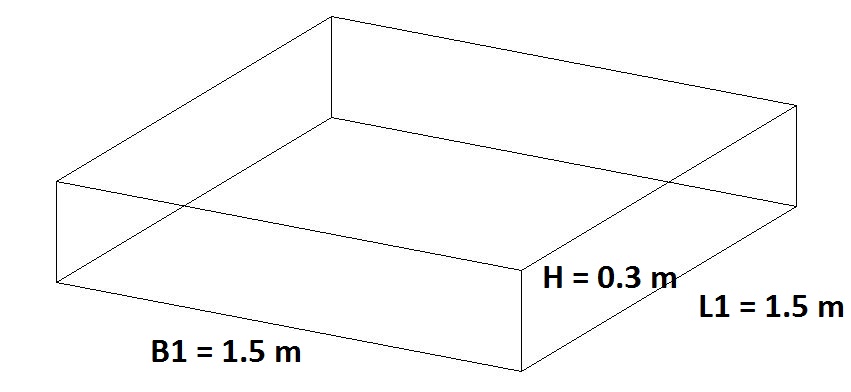
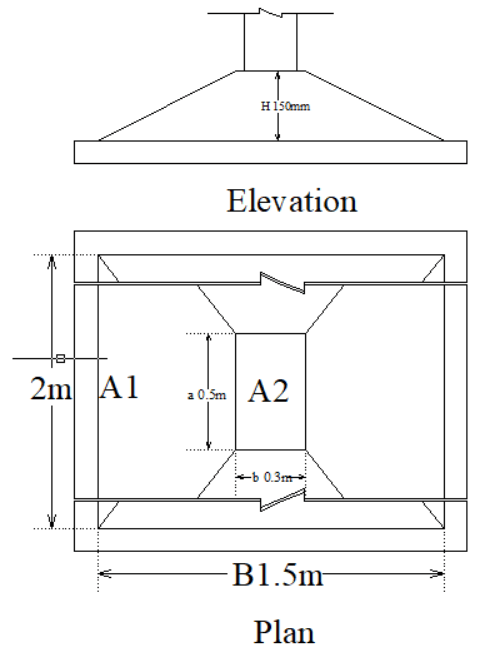

Leave a Reply